[ad_1]
Have you ever used Google as a dictionary? Maybe you’ve asked Google “how old is tom cruise” and didn’t need to click on anything because the answer was right there.
If so, you’ve performed a zero-click search.
Thanks to SERP features that give helpful info right on the results page, more searches than ever are ending without a click-through to a website.
But where does that leave your SEO strategy?
You’ll want to learn how to avoid zero-click searches as well as how to make them work in your favor.
What Are Zero-click Searches?
A zero-click search is when someone enters a query on a search engine but doesn’t end up clicking on any of the results.
For example, when Google puts information at the top of a results page like “how old is tom cruise,” there’s no need for the searcher to scroll and check out any of the other organic results.
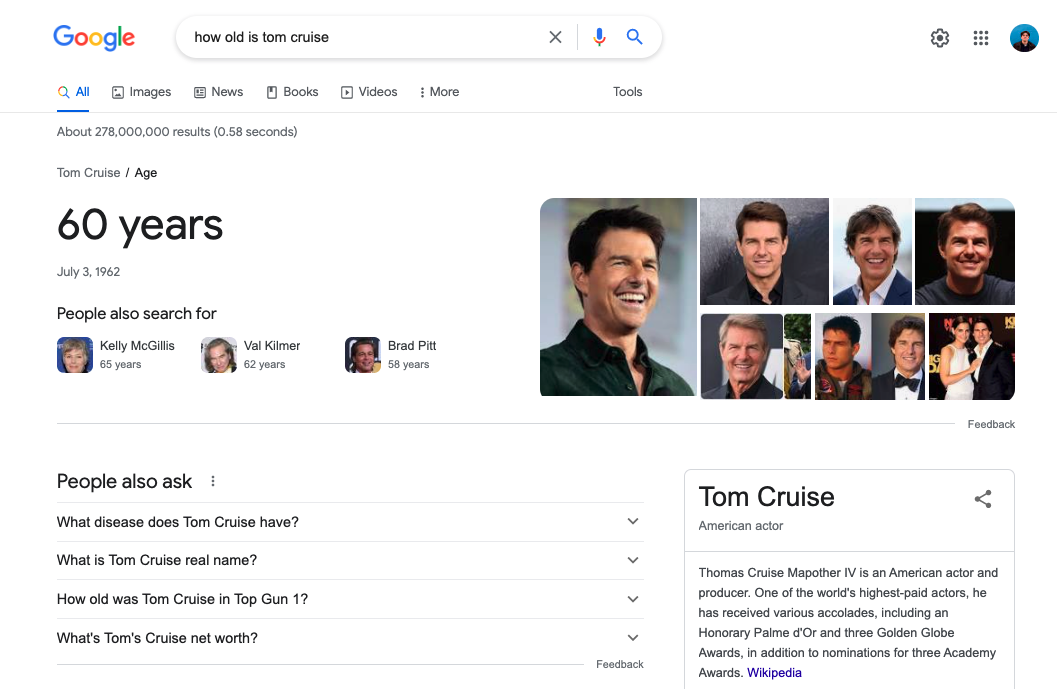
Instant answer at the top, PAA block right below, and a knowledge panel on the side. This is the look that Google is turning more SERPs into, leading to fewer clicks.
What does this mean for SEOs?
- Ranking near the top of the SERP isn’t always enough to get traffic
- Zero-click searches hurt the CTR of your SEO rankings
- You should be evaluating keyword’s SERP features to understand its true ability to benefit your strategy
Zero-click Searches Hurt Your SEO’s CTR
Zero-click searches aren’t great target keywords in the traditional sense.
If you go after a keyword that already has an instant answer at the top of the SERP, you’ll be swimming upstream trying to get any traffic.
This issue is probably most clear when looking at online dictionaries and thesauruses.
In our Five Hours of SEO marathon webinar, Kevin Indig pointed out how sites like these have an especially hard time with this issue.
Notice how far down the first organic result is for this definition SERP:
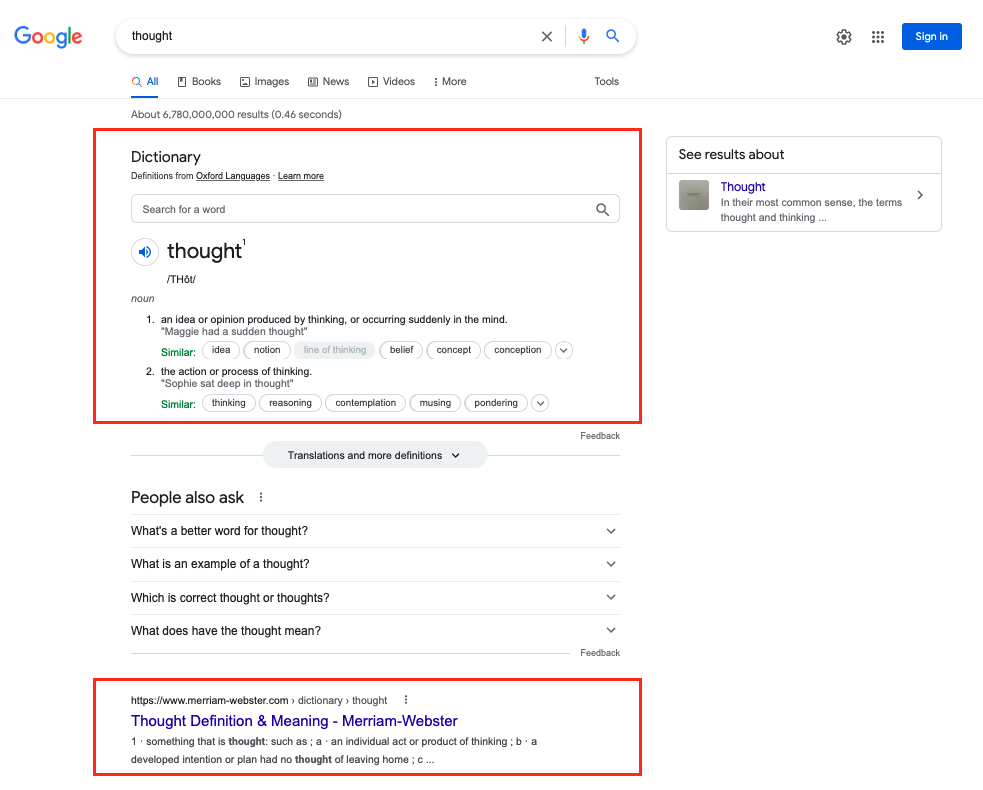
Why would people searching for a quick definition continue to a dictionary website when Googling the definition is faster?
With a smaller screen on mobile search, more of the “real estate” is taken up by SERP features and instant answers.
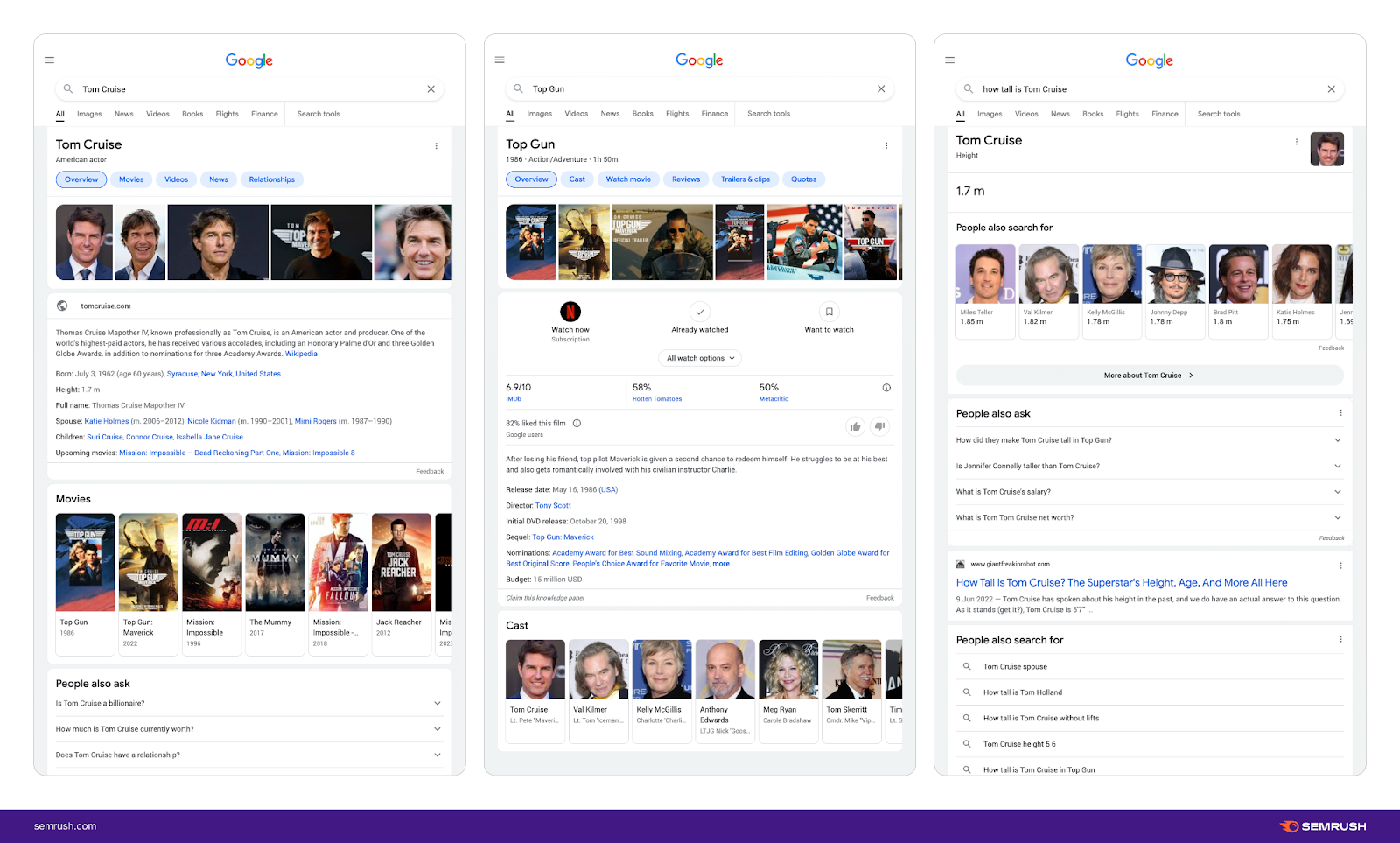
So, how can you adjust?
Two options:
- You can fight back, targeting these SERP features with “zero-click content.” The goal here would be building your brand visibility, not necessarily bringing in organic traffic. This strategy involves schema markups, images, video, and quick answers to compete for visibility on those SERPs with low potential.
- You can choose better battles, hunting down those keywords where the potential for clicks is higher than others. By focusing your SEO efforts on keywords that can lead to clicks, you could see more return on investment.
How to Spot and Avoid Zero-click Searches
To avoid zero-click searches in your SEO plan, let’s go over how to identify them.
Some reasons why a SERP could have zero (or very low) click potential for organic results include:
- Instant answers
- A high amount of paid ads
- A high amount of SERP features, especially those with no links
- If the SERP is mostly dominated by a single domain
As you conduct a SERP analysis of a potential target keyword, you could look for these signs of low click potential.
Certain SERP features like instant answers, for example, will impact your potential for clicks more than others (like an image pack).
So, you should first look for keywords without an instant answer.
With Semrush, you can check the presence of SERP features for every keyword with the SERP features filter that you’ll find in any keyword-based report.
Open up this filter and go to the bottom where it says “None.” This will show keywords where there are no SERP features of any kind.
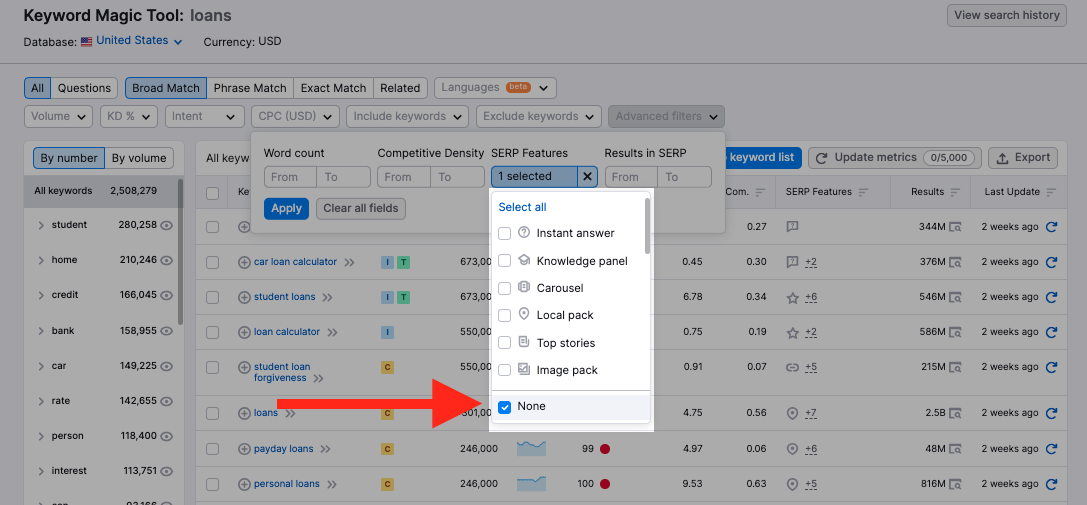
After applying this filter, the keywords shown will have more “traditional” SERPs with only blue organic links.
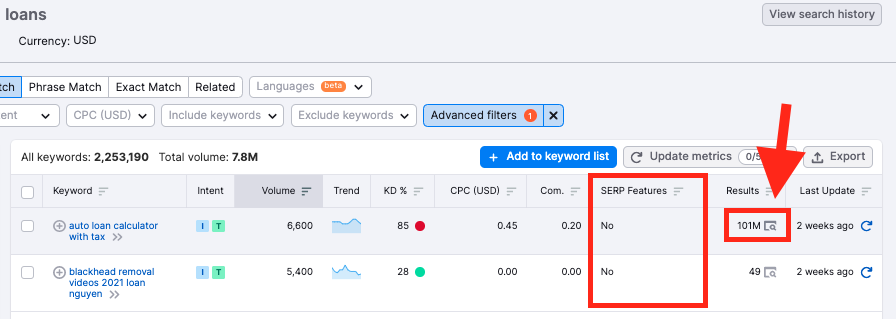
You’ll be able to see under the SERP features column it says “No.” Then, you can click on the icon in the Results column to see the actual SERP with no special features taking attention away from the organic links.
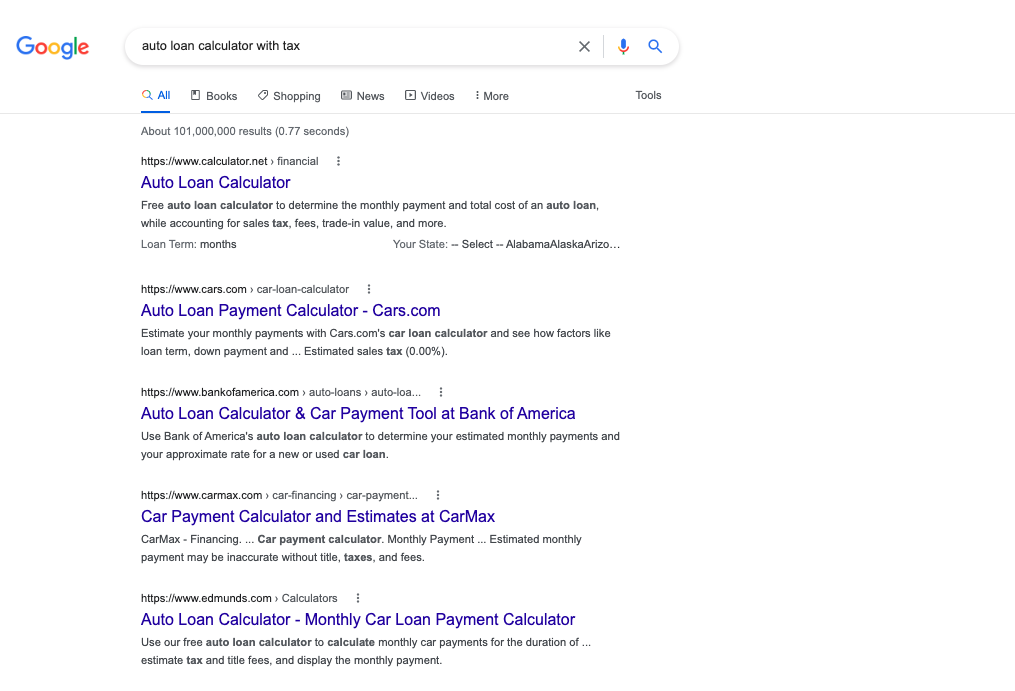
Chances are, getting a top 3 position on a SERP like this would bring a much better CTR than a SERP filled special features.
Bonus tip: Combine the filter for no SERP features with two more filters—search volume and keyword difficulty. Then, you’ll be looking at your best opportunities for bringing in new organic traffic without too much competition.
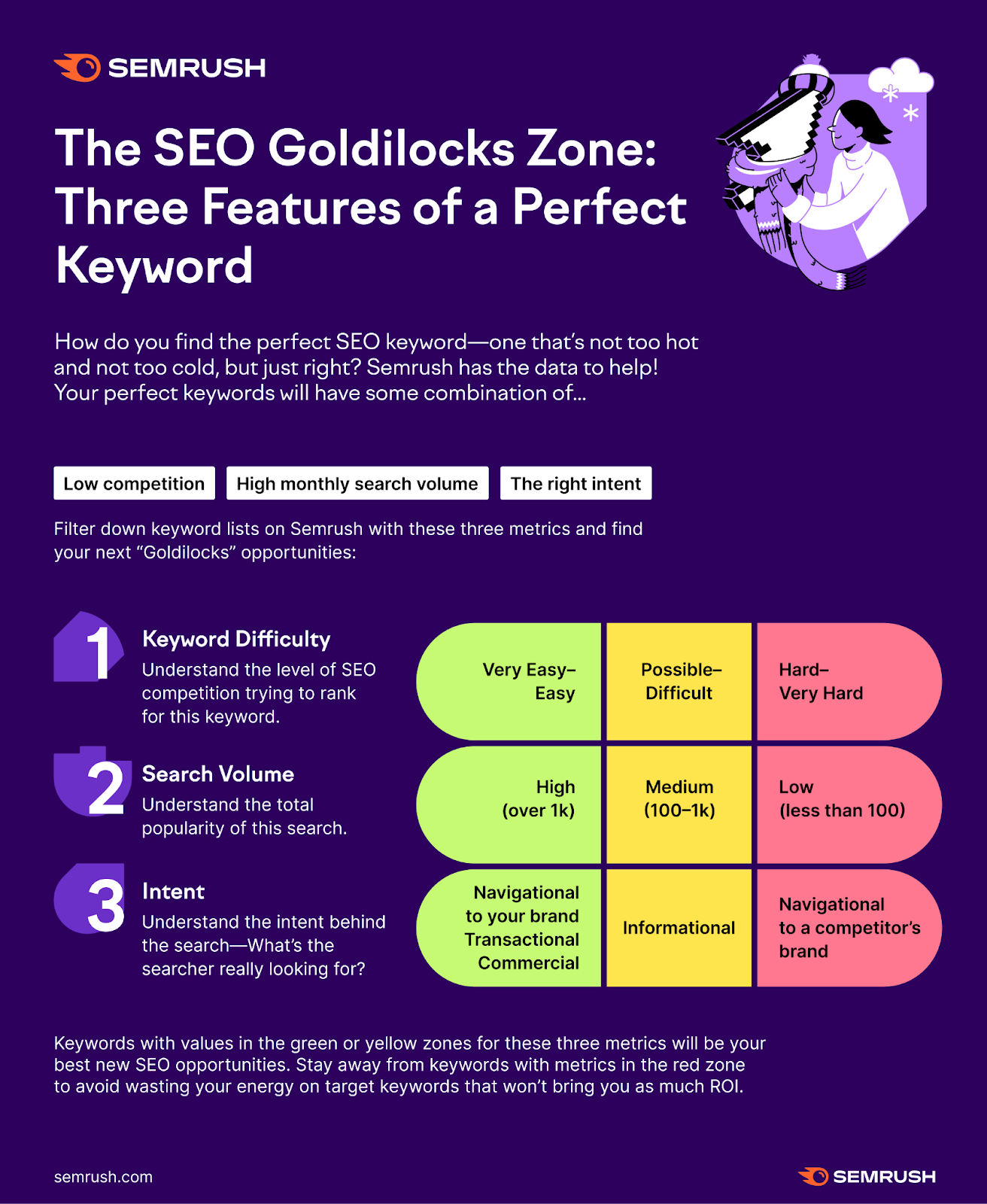
Look For Long-tail Keywords
Long-tail keywords are another way to “choose your battles” and get around overly-competitive keywords that would lead to zero-click searches.
These keywords are often way less competitive (lower KD%) than more popular “head” terms, so it could be easier for you to catapult into the top half of the SERP.
However, being less popular doesn’t make them less valuable.
Long-tail keywords come with highly specific intent. That means you can target them with highly specific content that goes in-depth on a topic to serve your target audience with the info they need.
Here’s an example list no SERP features and relatively low KD. After applying those filters, you can see they’re mostly long-tail keywords.
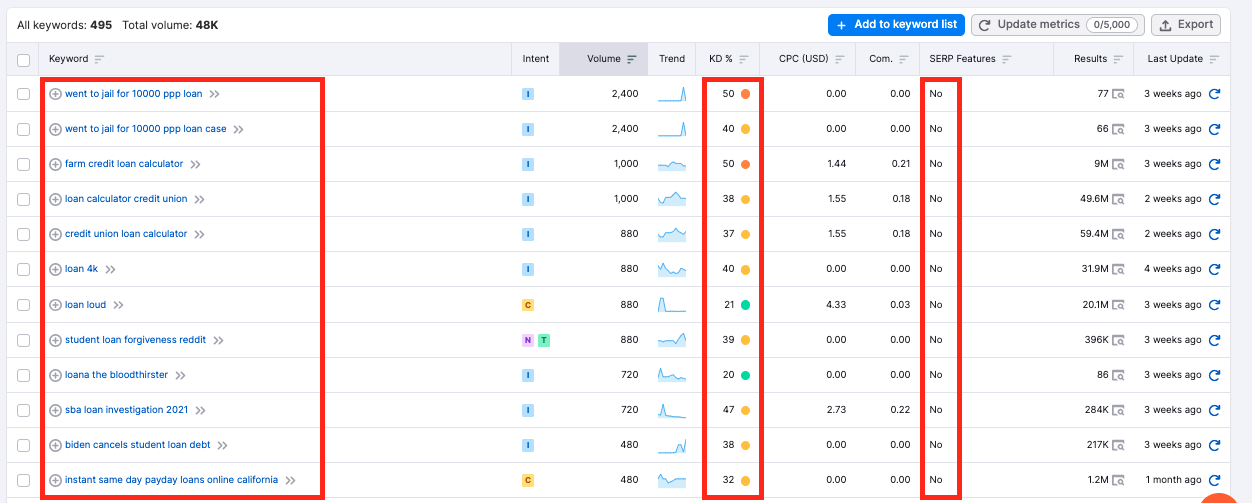
Build a Community & Brand
In a 2020 Forbes interview, Kevin Indig offered three digital marketing strategies to combat zero-click searches:
- Funneling users into controllable environments
- Becoming a destination to catch users before they search
- Building a strong brand to draw searchers in
These strategies would help by taking the pressure off of SEO to be the channel that does everything for you. Building apps, email lists, and communities—Indig writes—can allow businesses to tap into their audience wherever they are.
Fostering a community can also build brand loyalty, which could lead to more direct traffic and returning customers. You want people to think of you before they go to Google. That way, you don’t have to compete at all.
Getting Value from Zero-click Searches
What if there’s a keyword that’s super relevant to your business or brand, but it’s likely a zero-click search?
You wouldn’t want to avoid this completely, but you also can’t expect to use it for traffic.
So what can you do?
Since you’re likely not going to land any organic traffic from this keyword, you can shift your goal from gaining traffic to gaining brand visibility.
This means:
- Creating unique images and infographics to go after image packs
- Creating unique videos (with a great thumbnail) to appear in video carousels
- Including FAQs to optimize for people also ask (PAA) questions
- Structuring your articles to optimize for featured snippets and instant answers
Going from Zero to Hero
As the traditional first page of Google evolves, so should you. Three things you should learn to aid your growth:
- How to avoid zero-click searches in your target keyword list
- How to target and win SERP Features
- How to forecast SEO with all of this in mind
Finding those keywords with high click potential can yield better results from your SEO. Then, working on your brand at the same time will empower your business’ overall online presence.
[ad_2]
Source link